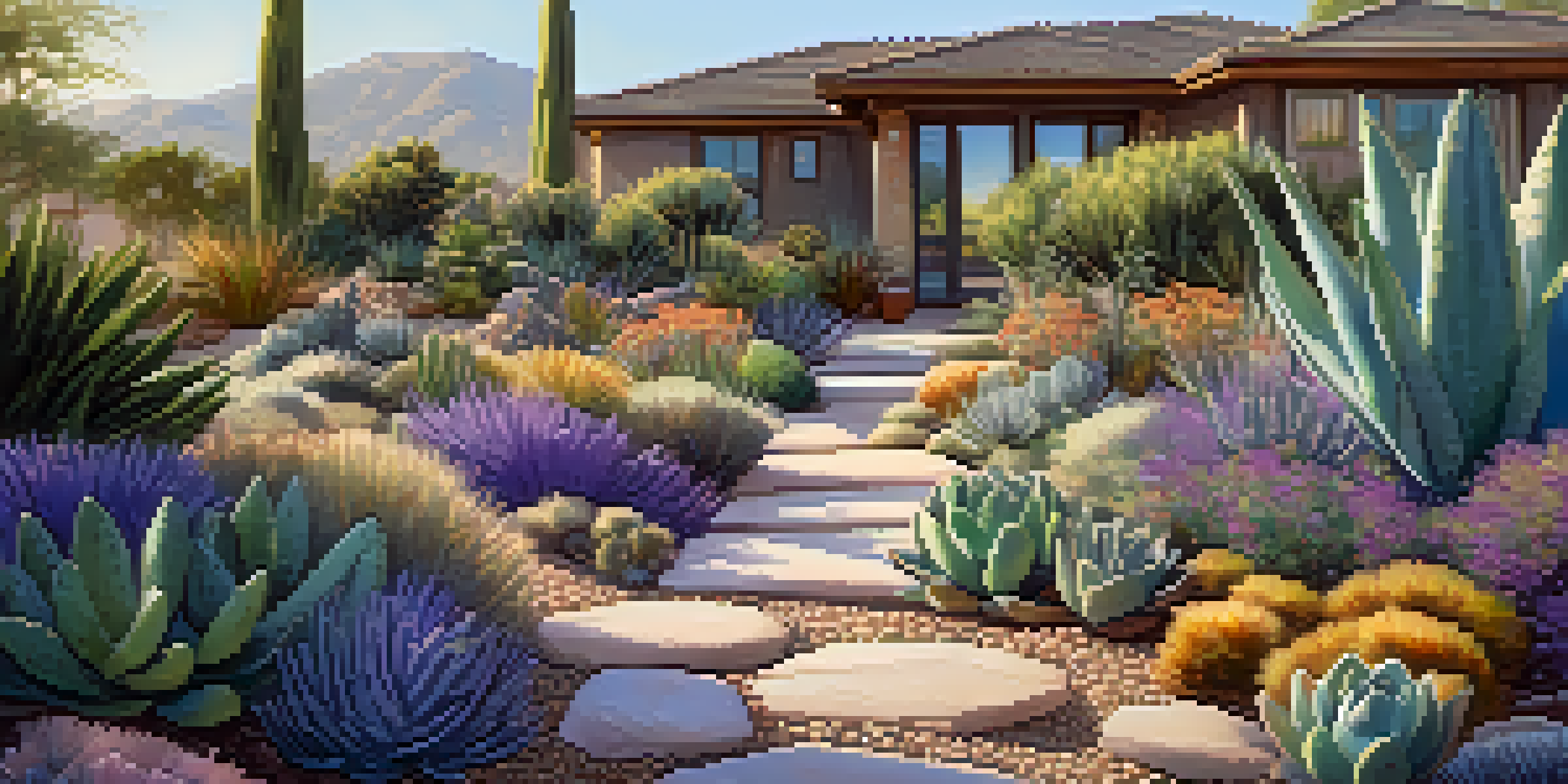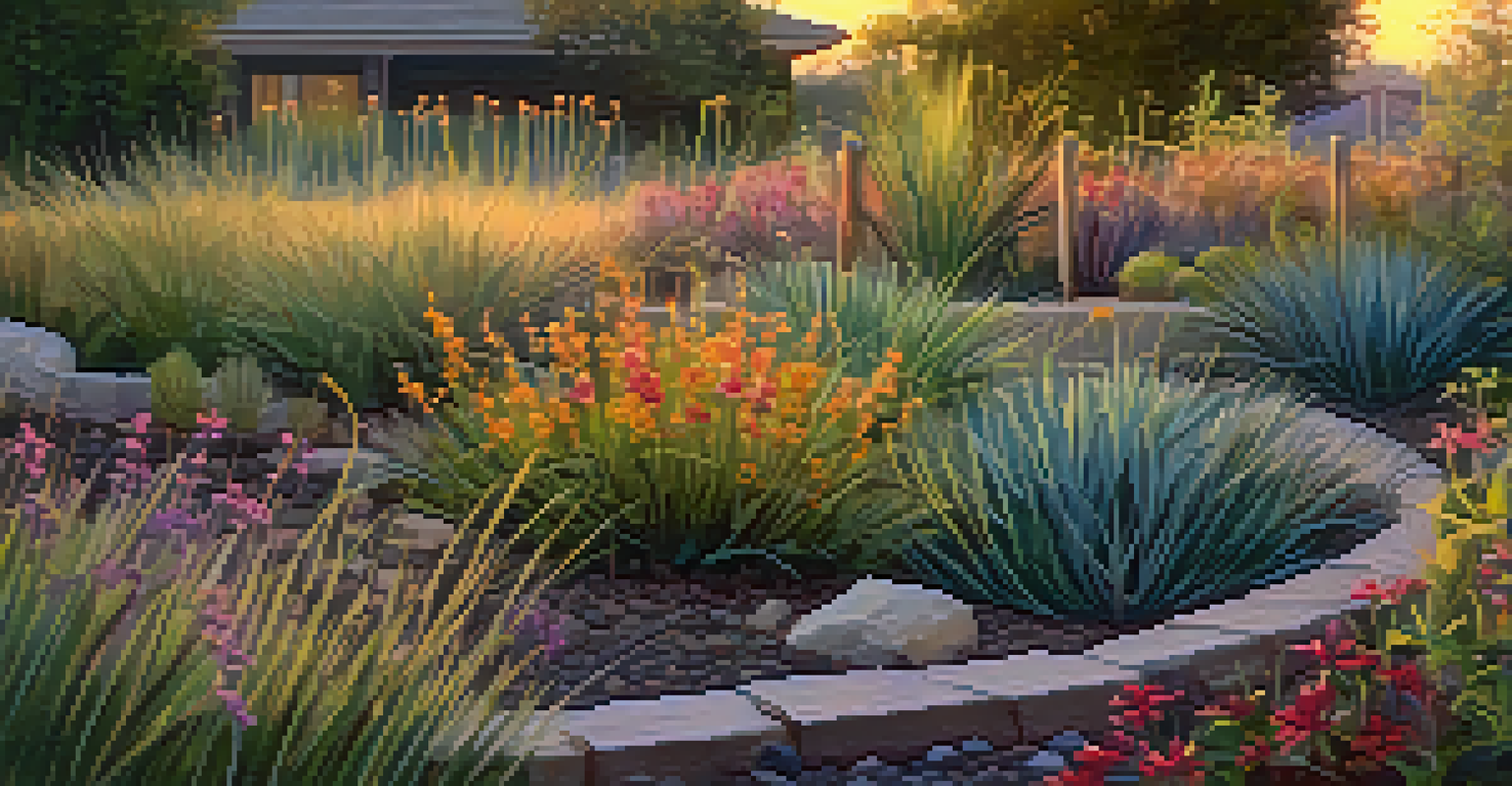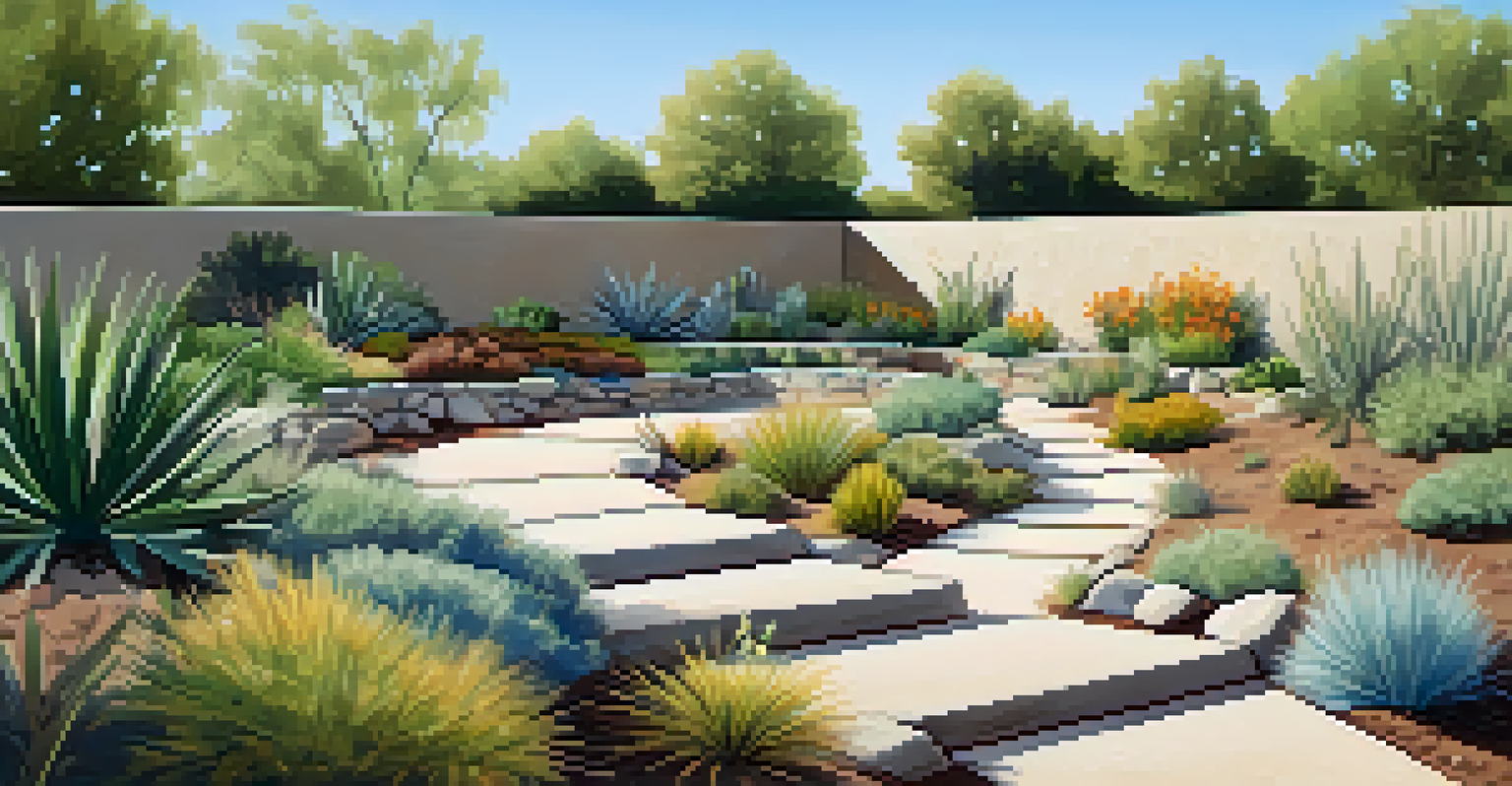Xeriscaping: Landscaping for Minimal Water Use

Understanding Xeriscaping and Its Importance
Xeriscaping is a landscaping approach designed to minimize water use. It focuses on selecting drought-resistant plants and employing efficient irrigation techniques. This method is especially crucial in regions facing water scarcity, as it promotes sustainability and reduces the environmental impact of landscaping.
The best time to plant a tree was 20 years ago. The second best time is now.
The concept of xeriscaping emerged in the 1980s, driven by the need for efficient water management. It encourages homeowners to rethink traditional landscaping, which often relies heavily on water-intensive grass lawns. By adopting xeriscaping practices, you can create a beautiful yard while conserving a vital resource.
Incorporating xeriscaping into your landscape not only benefits the environment but also enhances your property’s aesthetic appeal. With a wide variety of native plants and design techniques available, xeriscaping can transform any outdoor space into a vibrant, low-maintenance oasis.
Key Principles of Xeriscaping Explained
Xeriscaping is built on several key principles designed to optimize water usage. These include planning and design, soil improvement, and plant selection. Each principle plays a vital role in creating a sustainable landscape that thrives with minimal water.

The first principle, planning and design, involves mapping out your space and understanding the specific needs of your plants. This helps in determining the best locations for various species, ensuring they receive adequate sunlight and protection from harsh weather. A well-thought-out design can significantly reduce water waste.
Xeriscaping Reduces Water Usage
This landscaping method focuses on drought-resistant plants and efficient irrigation to conserve water.
Soil improvement is another critical aspect, as healthy soil retains moisture better and allows plants to establish deeper roots. By amending your soil with organic matter, you can create a robust foundation for your plants. Lastly, selecting the right plants—preferably native or drought-resistant varieties—ensures your landscape remains resilient in dry conditions.
Choosing the Right Plants for Xeriscaping
Selecting the right plants is fundamental to successful xeriscaping. Native plants are ideally suited for local climates and require less water and maintenance. By choosing plants that naturally thrive in your area, you can create a sustainable habitat that supports local wildlife.
Sustainability is about ecology, economy, and equity.
Some popular drought-resistant plants include lavender, succulents, and ornamental grasses. These plants not only conserve water but also add texture and color to your landscape. Additionally, grouping plants with similar water needs together can streamline your watering process, making it more efficient.
When choosing plants, consider their growth habits, bloom times, and seasonal interest. A diverse plant selection can provide visual interest throughout the year, ensuring your xeriscaped garden remains appealing, even during dry spells.
Effective Irrigation Techniques for Xeriscaping
Efficient irrigation is a cornerstone of xeriscaping, minimizing water waste while ensuring plant health. Drip irrigation systems are particularly effective, delivering water directly to the roots where it’s needed most. This method reduces evaporation and runoff, making every drop count.
Another important technique is to water early in the morning or late in the evening. This timing helps to decrease evaporation and allows plants to absorb more moisture. Additionally, using mulch around plants can help retain soil moisture and regulate temperature, further enhancing water efficiency.
Native Plants Boost Biodiversity
Choosing native plants in xeriscaping supports local wildlife and promotes a balanced ecosystem.
Lastly, consider harvesting rainwater by installing rain barrels. This sustainable practice not only provides a source of irrigation but also reduces runoff and helps recharge groundwater. By combining these methods, you can significantly improve the efficiency of your watering practices.
Design Ideas for Xeriscaped Gardens
Designing an attractive xeriscaped garden can be an enjoyable creative process. Start by incorporating various textures and colors through the use of different plants. Consider using boulders, gravel, and mulch to create a visually appealing landscape that requires minimal maintenance.
Pathways made of permeable materials can enhance the aesthetic appeal while allowing rainwater to soak into the ground. Additionally, using raised beds can provide better drainage and make it easier to manage your plants. These design elements not only improve functionality but also contribute to the overall beauty of your landscape.
Lastly, consider adding features like decorative stones or a dry creek bed. These elements not only serve practical purposes, such as directing water flow, but also add artistic flair to your garden. With thoughtful design, your xeriscaped area can become a stunning focal point of your property.
Maintenance Tips for Xeriscaped Landscapes
While xeriscaping is designed to be low-maintenance, some care is still required to keep it thriving. Regularly check for weeds, as they can compete for water and nutrients. A layer of mulch can help suppress weeds while also conserving moisture, making maintenance easier.
Monitoring your plants for signs of stress is essential, especially during dry spells. Adjust your watering schedule based on rainfall and temperature to ensure your plants remain healthy. Seasonal tasks like pruning and fertilizing can also support plant health without excessive water use.
Sustainable Design Enhances Beauty
Xeriscaping combines aesthetics with functionality, creating low-maintenance gardens that are visually appealing.
Finally, remember that xeriscaping is about creating a resilient landscape. Embrace the natural beauty of your garden as it evolves over time. With the right care, your xeriscaped space can flourish while conserving water and enhancing your outdoor experience.
The Environmental Benefits of Xeriscaping
Xeriscaping plays a significant role in promoting environmental sustainability. By reducing water usage, it lessens the strain on local water supplies, particularly in drought-prone areas. This conservation effort can have a substantial impact on the health of ecosystems and communities alike.
Additionally, xeriscaped gardens encourage biodiversity by providing habitats for native wildlife. Birds, butterflies, and beneficial insects are drawn to diverse plantings, promoting a balanced ecosystem. This can lead to healthier gardens that require fewer pesticides and chemical fertilizers.

Moreover, xeriscaping can reduce the need for gas-powered lawn maintenance equipment, decreasing air pollution and carbon emissions. By embracing this sustainable landscaping approach, you can contribute to a healthier planet while enjoying a beautiful and functional outdoor space.